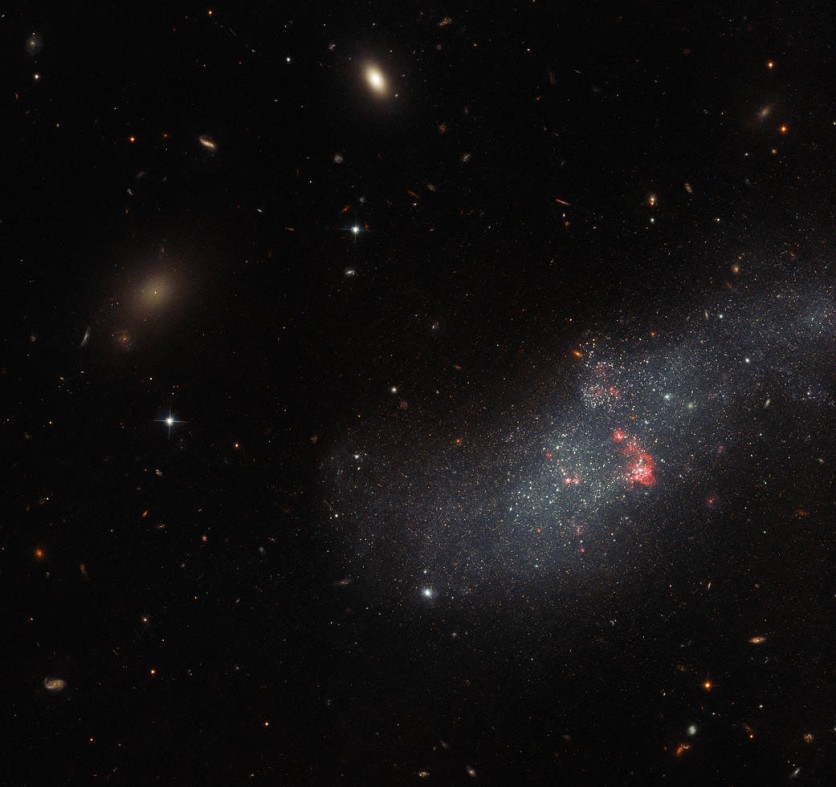NASA/ESA's Hubble Space Telescope has captured a stunning image of a small galaxy named UGCA 307, which appears like a hazy patch of passing cloud.
This dwarf galaxy, located in the constellation Corvus, lies approximately 26 million light-years away from Earth and lacks a defined structure. It consists of a diffuse band of stars with red bubbles of gas that indicate regions of recent star formation.

Exploring Nearby Galaxies
The image of UGCA 307 is part of a Hubble project to explore every known nearby galaxy and gain more knowledge about our galactic neighborhood. Hubble has already investigated nearly three-quarters of nearby galaxies in enough detail to identify their brightest stars and understand the populations of each galaxy.
By utilizing brief gaps in Hubble's viewing schedule, this Hubble study seeks to investigate the remaining 25% of neighboring galaxies.
Dwarf galaxies are some of the most common types of galaxies in the universe. They are typically much smaller and less massive than other types of galaxies, such as spiral or elliptical galaxies.
Despite their small size, dwarf galaxies can contain billions of stars. Some of the largest dwarf galaxies can have as many stars as the Milky Way but are packed into a much smaller space.
The small galaxies are also often the sites of intense star formation. This is because they typically have a high concentration of gas, which can be compressed and ignited to form new stars.
Sensitive Imaging Capabilities
Hubble's Advanced Camera for Surveys (ACS), which took the image of UGCA 307 in stunning clarity, replaced one of the telescope's initial equipment, the Faint Object Camera, during Servicing Mission 3B in 2002.
Astronomers can examine the characteristics and behavior of celestial objects because of the ACS's highly sensitive imaging capabilities.
The main objective of the Hubble project, according to NASA, is to learn more about the formation, evolution, and interactions of galaxies. Astronomers seek to get a deeper insight into the processes that shape our universe and its inhabitants by analyzing neighboring galaxies.
Furthering our knowledge of the origins and makeup of the cosmos is another goal of the project, along with identifying suitable targets for the next missions.
Since it began operations in 1990, the Hubble Space Telescope has completely changed how we perceive the cosmos. It has captured some of the most spectacular images of astronomical objects, including galaxies, nebulae, and star clusters.
Related Article : NASA's Hubble Space Telescope Captures 'Butterfly Nebula' In Stunning Motion | Fun Facts About This Beautiful Space Butterfly

ⓒ 2025 TECHTIMES.com All rights reserved. Do not reproduce without permission.




